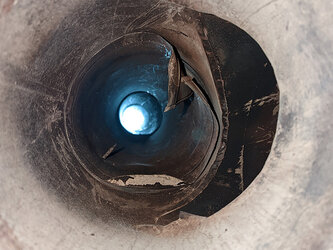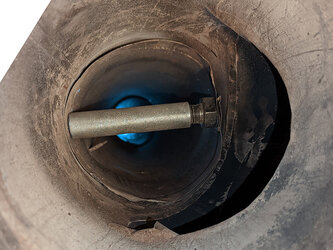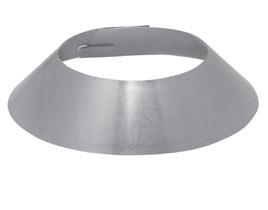I was prepping my stove and chimney for the upcoming season, and I have a pretty nasty internal issue.
It's an 8" pipe going into a T-piece that has a cleanout at the bottom and a horizontal run to the stove.
View 1 shows where the pipe's internal lining is starting to come away. I noticed this last season and my sweep said it wasn't a concern, but it's looking pretty significant to me, and it's a weakness near the hottest part of the system, which I don't love.
There's also that random bolt sticking through the pipe that's been there since we bought the house. Don't love that either.
Do we simply need to replace the first length of pipe, or could I find a high-temp fastener, to either pin the loose pieces back against the wall or draw them back against the wall of the pipe from the outside. Third alternative could be to put a metal band of the right diameter in there to force the metal back into place, but I'm hesitant to introduce aftermarket materials into my piping. Seems like a bad idea.
View 2.jpg just shows a temporary brace I put in to see if I could reform the metal back to where it should be. I have no intention of leaving it there.


It's an 8" pipe going into a T-piece that has a cleanout at the bottom and a horizontal run to the stove.
View 1 shows where the pipe's internal lining is starting to come away. I noticed this last season and my sweep said it wasn't a concern, but it's looking pretty significant to me, and it's a weakness near the hottest part of the system, which I don't love.
There's also that random bolt sticking through the pipe that's been there since we bought the house. Don't love that either.
Do we simply need to replace the first length of pipe, or could I find a high-temp fastener, to either pin the loose pieces back against the wall or draw them back against the wall of the pipe from the outside. Third alternative could be to put a metal band of the right diameter in there to force the metal back into place, but I'm hesitant to introduce aftermarket materials into my piping. Seems like a bad idea.
View 2.jpg just shows a temporary brace I put in to see if I could reform the metal back to where it should be. I have no intention of leaving it there.




